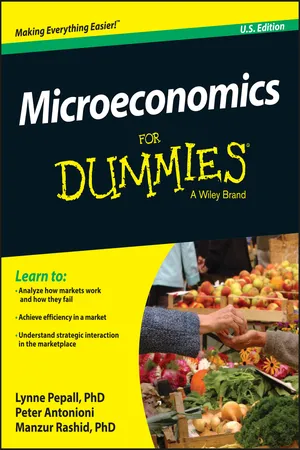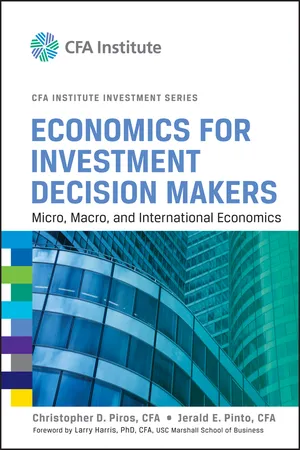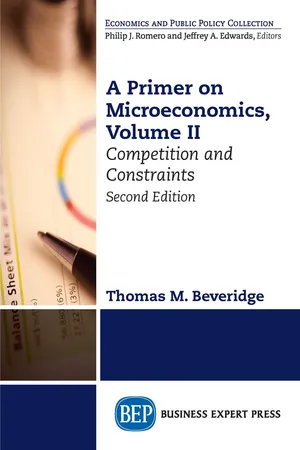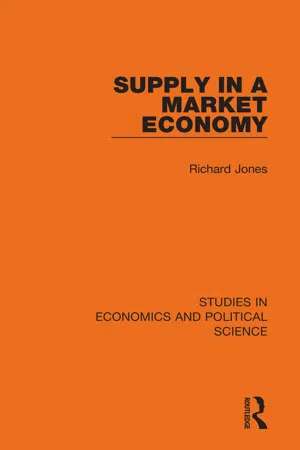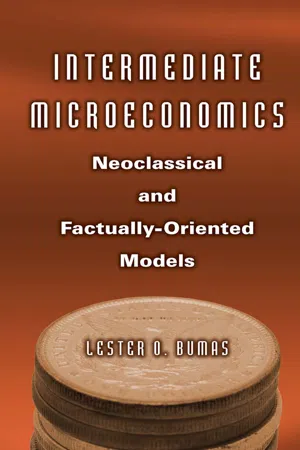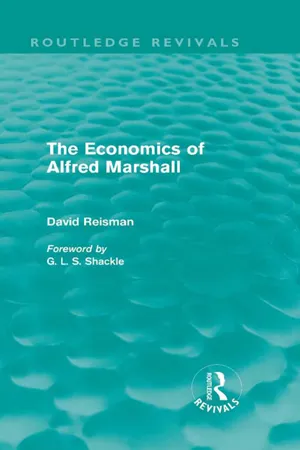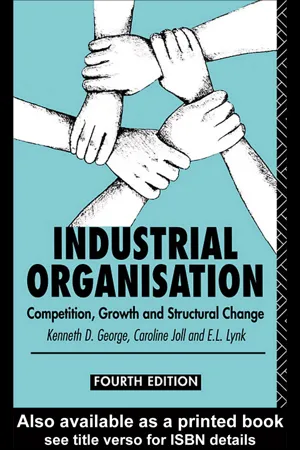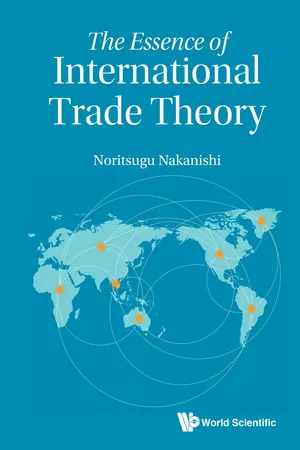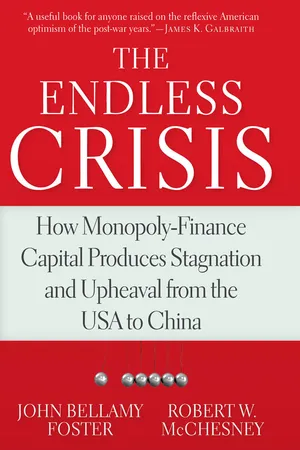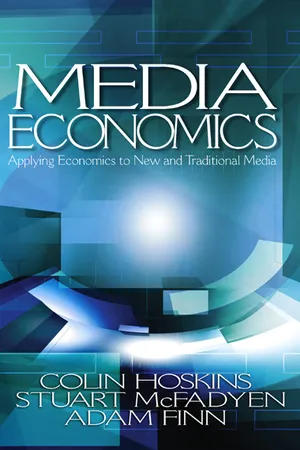Economics
Oligopoly Vs Perfect Competition
Oligopoly and perfect competition are two distinct market structures in economics. In an oligopoly, a small number of large firms dominate the market, leading to interdependence and potential for collusion. In perfect competition, there are many small firms, each with no market power, leading to price-taking behavior and efficient allocation of resources.
Written by Perlego with AI-assistance
Related key terms
11 Key excerpts on "Oligopoly Vs Perfect Competition"
- eBook - ePub
- Lynne Pepall, Peter Antonioni, Manzur Rashid(Authors)
- 2016(Publication Date)
- For Dummies(Publisher)
oligos meaning few). The classic example of an oligopoly is the airline industry, where a few airlines compete among themselves for customers, and the bulk of the domestic market is locked up among the four largest competitors: American, Delta, United Airlines, and Northwest. But oligopoly is visible everywhere, in industries as different as cable television services, computer and software industries, cellular phone services, and automobiles.One of the ways in which economists analyze oligopoly is by comparing it with other market structures. Compared to perfect competition, described in Chapter 10 , consumers don’t get as good a deal. But compared to monopoly (which has no competition, see Chapter 13 ), they do better under oligopoly.Economists use the term imperfect competition to describe market structures with a few competitors, as in oligopoly, or two competitors (duopoly).In this chapter, we discuss the basic attributes of an oligopolistic market, three ways of describing how firms operate in such a market, and how firms are able to differentiate themselves from their rivals and gain market power.Outlining the Features of an Oligopoly
The important difference between the model of an oligopoly and the model of a perfectly competitive market is that firms in oligopoly can influence market outcomes. As a result, firms behave strategically and try to anticipate the strategic interactions among each other. This means that they form beliefs about what their rivals might do in response to their acts. This behavior makes oligopoly a useful jumping-off point for looking at even more complex markets, and for understanding how the concepts of game theory are relevant to microeconomics. (Part IV covers game theory.)The first thing you have to do when looking at oligopoly is describe the key characteristics that make a given market an oligopoly. Besides having only a few firms in the market, here are some other features to note: - eBook - ePub
Economics for Investment Decision Makers
Micro, Macro, and International Economics
- Christopher D. Piros, Jerald E. Pinto(Authors)
- 2013(Publication Date)
- Wiley(Publisher)
Profits under the conditions of perfect competition are driven to the required rate of return paid by the entrepreneur to borrow capital from investors (so-called normal profit or rental cost of capital). This does not mean that all perfectly competitive industries are doomed to extinction by a lack of profits. On the contrary, millions of businesses that do very well are living under the pressures of perfect competition. Monopolistic competition is also highly competitive; however, it is considered a form of imperfect competition. Two economists, Edward H. Chamberlin (United States) and Joan Robinson (United Kingdom), identified this hybrid market and came up with the term because there are strong elements of competition in this market structure and also some monopoly-like conditions. The competitive characteristic is a notably large number of firms, while the monopoly aspect is the result of product differentiation. That is, if the seller can convince consumers that its product is uniquely different from other, similar products, then the seller can exercise some degree of pricing power over the market. A good example is the brand loyalty associated with soft drinks such as Coca-Cola. Many of Coca-Cola’s customers believe that the beverage is truly different from and better than all other soft drinks. The same is true for fashion creations and cosmetics. The oligopoly market structure is based on a relatively small number of firms supplying the market. The small number of firms in the market means that each firm must consider what retaliatory strategies the other firms will pursue when prices and production levels change. Consider the pricing behavior of commercial airline companies. Pricing strategies and route scheduling are based on the expected reaction of the other carriers in similar markets. For any given route—say, from Paris, France, to Chennai, India—only a few carriers are in competition - eBook - ePub
A Primer on Microeconomics, Second Edition, Volume II
Competition and Constraints
- Thomas M. Beveridge(Author)
- 2018(Publication Date)
- Business Expert Press(Publisher)
many. Monopolistic competition’s distinguishing characteristic is product differentiation—the monopolistically competitive firm lives and dies by its ability to attract customers in a crowded marketplace. Despite the downward-sloping demand and marginal revenue curves, the short-run and long-run equilibration stories for perfectly competitive and monopolistically competitive firms are very similar. Monopolistic competition differs from monopoly and oligopoly in that firms in monopolistically competitive industries can’t influence the market price by virtue of their size. Relative to perfect competition, the presence of monopolistic competition bestows innovation, variety, and service for the consumer, but with higher-than-necessary costs and a deadweight loss.Brain Teaser Solution: Almost certainly, your restaurant will be monopolistically competitive—with many close substitutes, low barriers to entry, and highly elastic demand. Product differentiation ought to be important to you and knowledge of local market conditions may be critical to your survival. Note that your restaurant is selling not only food—you are offering an entire “dining experience” that will include elements such as location, decor, and quality of service.Oligopoly: Burgers, Banking, and BeerThe final of the four market structures—oligopoly—lies closer to monopoly than to perfect competition, and sometimes, oligopolistic firms find it advantageous to group together into a cartel and behave, in effect, like a monopoly in order to maximize their joint profits. In other cases, competition between rivals may be aggressive—burger wars, for instance. In other industries, firms may deemphasize rivalry, preferring less-threatening methods of attracting customers.THINK IT THROUGH: If you wish to identify probable oligopolists, think about the sponsors of “big” events, such as the Super Bowl, the World Cup, or the Olympics, or the advertisers in Time or Sports Illustrated. Almost certainly, the firms you see are in oligopolistic industries.Characteristics of OligopolyAn oligopolistic industry has a “few” large interdependent firms within a market—the market may be local, national, or international. Usually (but not always), each firm has substantial market power and can impose strong barriers to entry, often because of significant economies of scale. Products may be differentiated (cars or burgers) or standardized (oil and other chemicals). Firms may compete in terms of price or they may not. A key characteristic of oligopoly is mutual interdependence - eBook - ePub
- Richard Jones(Author)
- 2021(Publication Date)
- Routledge(Publisher)
As has been stated above, the theory of monopolistic competition is regarded by many economists as being in danger of becoming something of an oddity in the history of economic thought. The same may be said of the concept of excess capacity. Some reasons for this have been advanced above and it is not appropriate to examine these issues further here. Whatever the merits or demerits of the argument, there can be no denying the fact that the theory of monopolistic competition has not had the impact upon economic theory that its instigator foresaw. The most important issues have been the usefulness of the theory of perfect competition and the relationship of this theory to new theories developed outside the profit-maximising paradigm. V. Oligopoly It will be seen in Chapter 5 that the most common form of market structure to be encountered in practice is that known as oligopoly – at least in the manufacturing sector of the economy. An oligopolistic market can be defined as one in which 'more than one seller is in the market, but when the number is not so large as to render negligible the contribution of each'. 16 In other words, what have been described earlier as collateral effects cannot be ignored. The fundamental problem is one of 'oligopolistic interdependence'; that is, decisions made by one producer are connected to those made by other producers in the same market. The effect of this interdependence in decision making is the loss of the virtue of received theory of producing simple determinate solutions. As a result it is frequently stated that, in oligopolistic markets, price and output are indeterminate. This statement is misleading if it is taken to imply that price and output decisions are not taken. What is true is that the way in which these decisions are taken cannot be explained by reference to the same set of factors that is utilised in the large group situation - eBook - ePub
Intermediate Microeconomics
Neoclassical and Factually-oriented Models
- Lester O. Bumas(Author)
- 2015(Publication Date)
- Routledge(Publisher)
Consider more deeply the boundaries of a market. There may be hundreds and sometimes thousands of retail stores selling the same product in a metropolitan region such as New York City. But much shopping takes place in a given neighborhood in which there are only a small number of stores for various kinds of common products: a few groceries, a couple of bakeries, three green grocers, a few banks, a couple of hardware stores, two gas stations, two auto repair shops, and several restaurants with only one or two of a particular culinary type. Each knows the existence of rivals selling close substitutes and, I suspect, pays some attention to their activities. These very small firms are also quasi-oligopolies.By the way, Adam Smith was well aware of the significance of the size of the market. His chapter “That the Division of Labour is Limited by the Size of the Market” indicates this. In a small market, he asserted, the country carpenter “is not only a carpenter, but a joiner, a cabinet maker, and even a carver in wood, as well as a wheelwright, a ploughwright, a cart and waggon maker” (1937, [1776], p. 17).Summary on Oligopoly
Oligopolies are large firms which dominate an industry and are rival conscious. Some of our most important industries are dominated by oligopolies. Cournot’s duopoly model is the oldest of those attempting to indicate the effect of a rival on the decision-making of a firm. Sweezy’s kinked demand function, based upon the assumed reactions of rivals, helps to explain the tendency of oligopoly prices to be sticky—to respond slowly to changes in supply and demand. Game theoretic models attempt to add to our understanding of the strategic actions made in the context of expected responses and sometimes independent actions of rivals.Concentration ratios are a measure of the extent of monopolization in a market. The traditional four largest firm measure has many imperfections, some of which are resolved by the Herfindahl-Hirschman concentration index.Price leadership frequently evolves in lieu of price competition. Non-price competition is the norm in stable oligopolies. Their advantage is that some forms of non-price competition are difficult to emulate, some can be hidden from view, and none are as threatening as price competition.Oligopolistic markets have barriers to entry. These arise from the economies of large-scale production, large financial start-up requirements, the need for special hard-to-get resources, and the requirement of special know-how. Technological advances have mixed effects on the development of this market form. Discoveries of value can, on the one hand, lead in the direction of monopolization and, on the other hand, allow for easier entry and an increase in competition. - David Reisman(Author)
- 2013(Publication Date)
- Routledge(Publisher)
2 and that there is more merit in being fuzzily right than in being precisely wrong. In his ambiguous and open-ended way he seems to have treated all four of the principal market structures that figure in contemporary economics textbooks, and it is with these four market structures that we shall be concerned in the four sections of the present chapter.6.1 PERFECT COMPETITION
The theoretical analysis of perfect competition, Stigler says, was long treated ‘with the kindly casualness with which one treats of the intuitively obvious’: ‘It is a remarkable fact that the concept of competition did not begin to receive explicit and systematic attention in the main stream of economics until 1871.’1 Economics rapidly made up for lost time and extensive definitions may be found in books such as Jevons' Theory of Political Economy (1871) and Edgeworth's Mathematical Psychics (1881).2 Marshall's own definition is as follows: ‘A perfect market is a district, small or large, in which there are many buyers and many sellers all so keenly on the alert and so well acquainted with one another's affairs that the price of a commodity is always practically the same for the whole of the district.’3 In such a market, ‘buyers generally compete freely with buyers, and sellers compete freely with sellers’,4 and the outcome of such ‘free competition’ is precisely what we would anticipate: there is ‘only one price on the market at one and the same time’ and no dealer is driven to ‘taking a lower or paying a higher price than others are doing’.5 Always assuming, of course, that four conditions implicit in the definition of the perfect market are satisfied.First , product homogeneity. We must assume that ‘the commodities referred to are always of the same quality’.6 This is the case, for example, with ‘raw produce’ (including the ubiquitous fresh fish), and also with some manufactured outputs - as where the goods in question are ‘so simple and uniform’, so ‘plain and common’, that their production ‘can be reduced to routine’ and their distribution can be ‘wholesale in vast quantities’ (goods like, say, ‘steel rails and calico’ which are available at a multiplicity of different outlets).7 Homogeneity in the sense of the economist must not, however, be confused with homogeneity in the sense of the physicist, as Marshall reflected in an important footnote on the subjective and the objective which occurs in his fragmentary Essay on Value and which reads as follows: ‘Inequalities of price are indeed often more apparent than real. A man who pays four shillings for a pair of gloves which he knows he could have bought in the next street for three, pays three shillings for the gloves and expends the fourth on love of display, on indulgence of old associations, or saving of time. He buys something extra just as much as if the gloves had had extra fancy work upon them.’8- eBook - ePub
Industrial Organization
Competition, Growth and Structural Change
- Kenneth George, Caroline Joll, E L Lynk(Authors)
- 2005(Publication Date)
- Routledge(Publisher)
Chapter 7
Oligopoly pricing
7.1 INTRODUCTION
Chapter 5 looked at different aspects of market structure, and its importance. This showed that market structure is an important determinant of conduct and performance, but that it is necessary to realise both that structure does not rigidly determine performance, and also that structure is not exogenous but can be affected by firms’ behaviour. Chapter 6 examined the market structure which is closest to the textbook case of simple monopoly—i.e. dominance. In this chapter we move on to consider industries which can be described as oligopolistic and focus attention on pricing behaviour in these industries. An oligopolistic industry contains a small number of firms, which means that the effect of any action taken by one of the firms will depend on how its rivals react. For instance, a price cut by one firm will result in a larger increase in sales if the other firms in the industry maintain their existing price than if they all follow its example.It is this interdependence which is the defining characteristic of oligopoly and which makes the analysis of oligopolistic industries so much more difficult than that of either more concentrated (monopoly) or less concentrated (competitive) industries. Yet it is very important to be able to understand the behaviour of firms in oligopolistic industries because so many markets in advanced economies consist of a relatively small number of firms who are intensely aware of their rivals’ reactions to any competitive move.Monopolies or dominant firms are able to decide on their pricing and other policies without worrying about the reactions of any other, smaller, firms in the market. In oligopolistic markets, firms have a certain amount of scope for independent action, but are constrained by their rival firms to an extent which depends on, among other things, the number and size of the oligopolists and the similarity of their products. This chapter considers only price-setting behaviour, and only as influenced by competition among existing competitors. Other important aspects of oligopolistic behaviour include: product differentiation (Chapter 8 ), and research and development (Chapter 9 - eBook - ePub
- Noritsugu Nakanishi(Author)
- 2018(Publication Date)
- WSPC(Publisher)
Chapter 5Oligopoly
Although the notion of comparative advantage plays crucial roles in determining trade patterns and gains from trade, in particular in the perfectly competitive circumstance, it is not the only cause of international trade. Other factors such as strategic interaction among agents, product differentiation and economies of scale come into play when the situation is not perfectly competitive. The first contributions to oligopolistic trade theory appeared in the early 1980s. By using a simple Cournot duopoly model, Brander (1981) has clearly shown that the strategic interaction among firms is a new independent cause of international trade and it explains “cross-hauling” or “intra-industry” trade in a homogeneous good. Built on Brander (1981)’s model, Brander and Krugman (1983) have shown that the strategic interaction among firms brings about “dumping” in the foreign market and this dumping is mutual. Following these contributions, a vast number of articles concerning the oligopolistic trade models has appeared and the literature is still growing.1 In this chapter, by using a simple unified model of international oligopoly, we focus on the relation between the strategic interaction among firms and international trade and examine trade patterns and gains from trade.25.1Market Structures
5.1.1Classification of Imperfect Competition
Unlike perfect competition, of which precise definition and characterization can be given, the notion of imperfect competition is not a single solid concept, but it consists of a wide range of situations/regimes that vary according to numerous combinations of certain aspects that characterize imperfect competition; (the only) one feature common to all imperfectly competitive situations is that some of agents in an economy have abilities to control prices of goods and services to some extent. How and why agents come to have controls over prices are different from situation to situation. Therefore, we would not (cannot) expect the - eBook - ePub
- Rob Dransfield(Author)
- 2013(Publication Date)
- Routledge(Publisher)
Oligopoly means ‘competition between a few producers’. Many markets on a global, regional, national and local scale are dominated by a few suppliers. For example, many airline routes to the Caribbean are dominated by just a small number of airlines. If you wanted to travel between London and Bridgetown (Barbados) you would have to choose between Air Canada, Caribbean Airlines, Virgin Atlantic, British Airways or American Airlines. Although there are only a few suppliers, the competition between these airlines can be intense. They will compete with each other in a number of ways – for example, on price, service, reliability or the days on which they operate.The market structure of oligopoly markets consists of the following features:- There are only a few firms in the market.
- Barriers to entry and exit are high, often because of economies of scale. The few firms that dominate the industry may employ expensive technologies.
- Products offered may be very similar or they may be differentiated.
- Firms tend to be price setters rather than price takers. However, there may be a market leader whose prices other firms tend to copy.
The key features of oligopoly are that there are only a few firms. The reason for there only being a small number of firms is typically barriers to entry. The most common barrier to entry is the cost of setting up. Large firms are able to benefit from economies of scale (economic advantages of being large). To become a large firm takes time and investment in resources.Many industries in the UK are characterized by scale economies leading to domination by oligopolists. Examples include:- Detergents and household cleaning fluids. There are three main companies that dominate this market in the UK – Unilever, Procter and Gamble and Reckitt Benckiser. These companies produce a high volume of output using large manufacturing units and extensive advertising. The high cost of setting up and operating acts as a barrier to entry.
- eBook - ePub
The Endless Crisis
How Monopoly-Finance Capital Produces Stagnation and Upheaval from the USA to China
- John Bellamy Foster, Robert W. McChesney(Authors)
- 2012(Publication Date)
- Monthly Review Press(Publisher)
Yet they were largely excluded from the core analytical framework of orthodox economics, which continued to rest on the unrealistic and increasingly preposterous assumptions of perfect competition, with its infinitely large numbers of buyers and sellers. Hence, small firms, able to enter and exit freely from industries, enjoyed perfect information, and produced homogeneous products. 29 The essential challenge facing conventional economics, in the face of the rise of the giant, monopolistic or oligopolistic firm, was either to hold on to its economic model of perfect competition, on which its overall theory of general equilibrium rested, and therefore forgo any possibility of a realistic assessment of the economy—or to abandon these make-believe models in favor of greater realism. The decision at which neoclassical theorists generally arrived—reinforced over and over throughout the twentieth century and into the twenty-first century—was to retain the perfect competition model, despite its inapplicability to real world conditions. The reasons for this were best stated by John Hicks in his Value and Capital (1939): If we assume that the typical firm (at least in industries where the economies of large scale are important) has some influence over the price at which it sells… [it] is therefore to some extent a monopolist…. Yet it has to be recognized that a general abandonment of the assumption of perfect competition, a universal adoption of the assumption of monopoly, must have very destructive consequences for economic theory - eBook - ePub
Media Economics
Applying Economics to New and Traditional Media
- Colin Hoskins, Stuart M. McFadyen, Adam Finn(Authors)
- 2004(Publication Date)
- SAGE Publications, Inc(Publisher)
Theater Enterprises, Inc. v. Paramount Film Distribution Corp.? Why has Disney established a reputation for bringing legal actions against any person or company it perceives as encroaching on its brand-name copyrights? Why did Chapters (a large Canadian book-selling chain) follow a policy of having two or more bookstores in each major Canadian market? Why was it a winner takes all situation in the Betamax versus VHS battle of VCR standards? What strategic errors did Sony make in promoting its Betamax format? Why did Sega make its new Dreamcast videogame machine available for rent at 1000 Hollywood Video stores? Why did Sony design its Playstation 2 videogame machine to be backwards compatible with its first Playstation system? Why did Sony and Philips, in the early 1980s, agree on a compact disk standard rather than compete to establish the standard? What happened when competition in delivery of cable television services was introduced in Paragould, Arkansas? Why have there been complaints that television networks provide common denominator programming? Why did the U.K. government block the bid of Murdoch’s BskyB satellite service for Manchester United? What concerns would the U.S. Federal Communications Commission (FCC) weigh when considering AT&T’s bid for U.S. cable companies TCI and MediaOne or MCI WorldCom’s proposed acquisition of Sprint?In this chapter, we examine monopolistic competition and oligopoly, the two industry structures located between perfect competition and monopoly on the competitiveness continuum. Most media industries fall under either monopolistic competition or oligopoly. As we saw in chapter 7 , Albarran (1996) classifies book publishing, magazine publishing, and radio as monopolistic competition and classifies television networks, motion pictures, and music recording as oligopoly. Owen and Wildman (1992) categorize television program production as monopolistic competition because “entry is easy, [and] the industry is unconcentrated” (pp. 61-62). Vogel (1998, pp. 286-287) argues that most entertainment industries are oligopolistic because, at least beyond the early stages of their development, the amount of capital required and its cost constitute a formidable barrier to entry by new competitors. All these authors were making their market structure classifications in the context of the United States.9.1 Monopolistic CompetitionThis market structure is similar to perfect competition, with free entry and exit and many small firms, but in monopolistic competition, the firms produce differentiated products. A monopolistic competitor thus has some control over price because no other firm makes an identical product. This price discretion is very limited, however, because there are many competitors producing close substitutes. A given customer may prefer the XYZ Video Store because of its location, selection, layout, or some other feature. The customer may stay loyal to the store if its nightly rental rate is $0.25 higher than some competitors, but not if it is $0.50 higher. The demand curve for the firm is thus negatively sloped.
Index pages curate the most relevant extracts from our library of academic textbooks. They’ve been created using an in-house natural language model (NLM), each adding context and meaning to key research topics.
